From early photographs to generative AI: Manipulated reality and privacy risks?
The challenge now is finding out what the rules are?
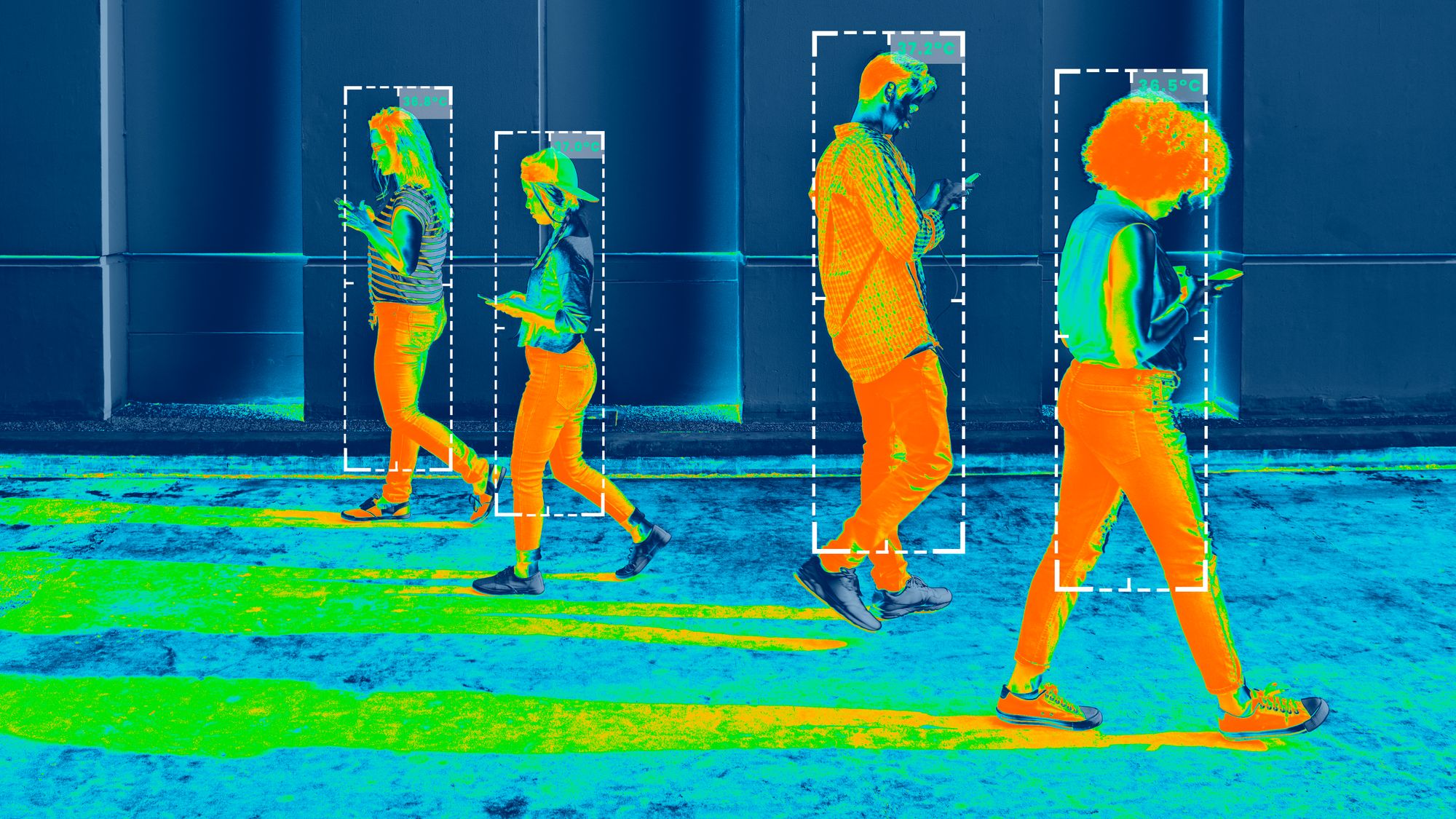
The history of photographic technology is a fascinating journey that spans centuries of innovation, experimentation, and technological advancement. From its earliest discoveries to today's digital age, photography has undergone numerous transformations that have led to the rich and varied field of visual storytelling that we know today. Indeed, visual storytelling can be a narrative of reality, a subjective interpretation, but also a manipulative will. And now we have the AI-generated images with all privacy and copyright risks.
Pre-photographic era (Antiquity-early 19th century)
Ancient civilizations such as the Greeks and even the Chinese were familiar with the phenomenon of the camera obscura, which allowed images to be projected from outside onto a darkened surface inside a room. The camera obscura is based on the principle that light rays from a strongly illuminated object, passing through a small opening, cross and project onto a plane, forming an inverted and reversed image of the object in question. Our vision works on the same physical principle: The eyeball is our camera obscura, the pupil is our small aperture, and the retina is the back wall onto which the image is projected. Even in humans, optical signals arrive at the retina inverted and are placed correctly by our brain.
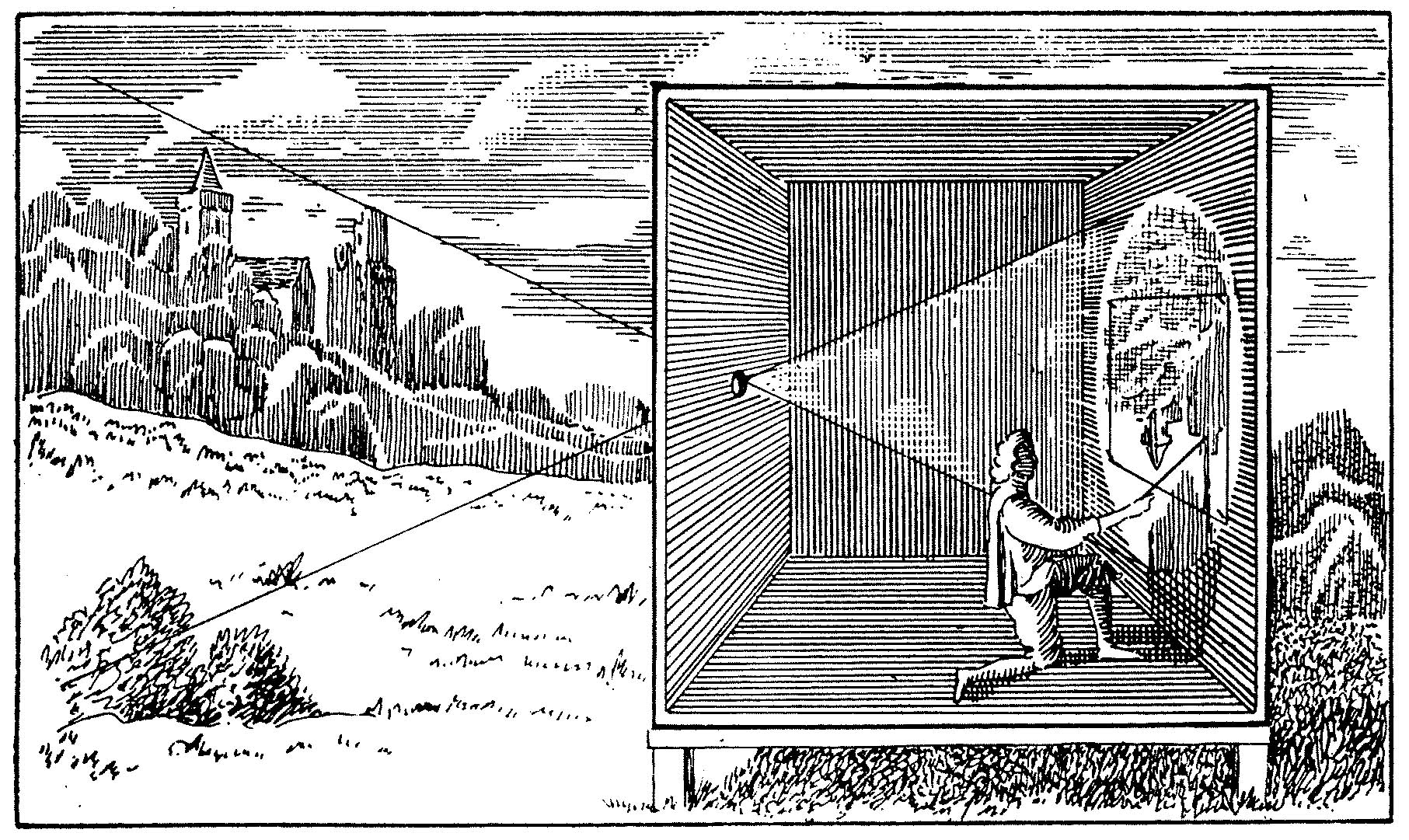
The principle of the "camera obscura"
The principle of the camera obscura is the basis of photography. It is a precursor of the camera. It is for this reason that the term "camera" is still in use today. The optical chamber is the ancestor of the camera. In real cameras, the diaphragm is replaced by a lens, which is equipped with devices for the control of the aperture and the focus. The image coming through the lens is projected onto the surface where the photographic film is located, in analog photography, or onto the sensor, in digital photography. The principle of the optical chamber, through the use of concave mirrors and lenses, was used in the past by painters such as Caravaggio, Van Dyck, Vermeer, Memling, Raphael, Giorgione, Lotto, Velazques, and many others. They projected images onto the canvas and then followed their lines with brushes and paint. The camera obscura allows the image captured by the lens to be projected, albeit upside down, by adjusting the distance between the lens and the screen.
Heliography
In the 1820s, Joseph Nicéphore Niépce (1765–1833) created the world's oldest photograph by exposing a bitumen-coated plate to light. This process, known as heliography, laid the foundation for future photographic techniques.
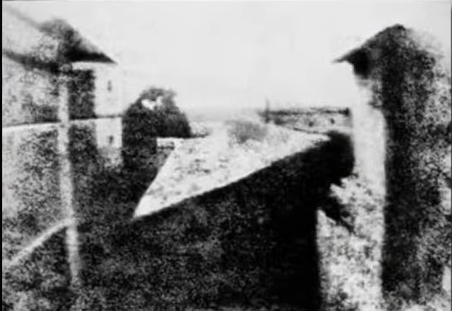
The invention of photography was announced simultaneously in France and England in 1839, dazzling the public and sending waves of excitement around the world. These amazing breakthroughs were based on centuries of developments in chemistry, optics, and the visual arts. These developments accelerated in the decades after 1790. The Niépce heliograph was made in 1827. It was during this period of feverish experimentation. It is the earliest camera obscura photograph in existence.
Daguerreotype Era (1830s - 1850s)
In 1829, Niépce entered into a formal partnership with Louis-Jacques-Mandé Daguerre (French, 1787-1851), who owned the famous Diorama in Paris. Daguerre continued to make significant improvements after Niépce's death, introducing his "daguerreotype" process in 1839. This process involved exposing a polished, silver-coated copper plate to iodine vapor, which created light-sensitive silver iodide. After exposure, the plate was developed with mercury vapor to produce a unique positive image.
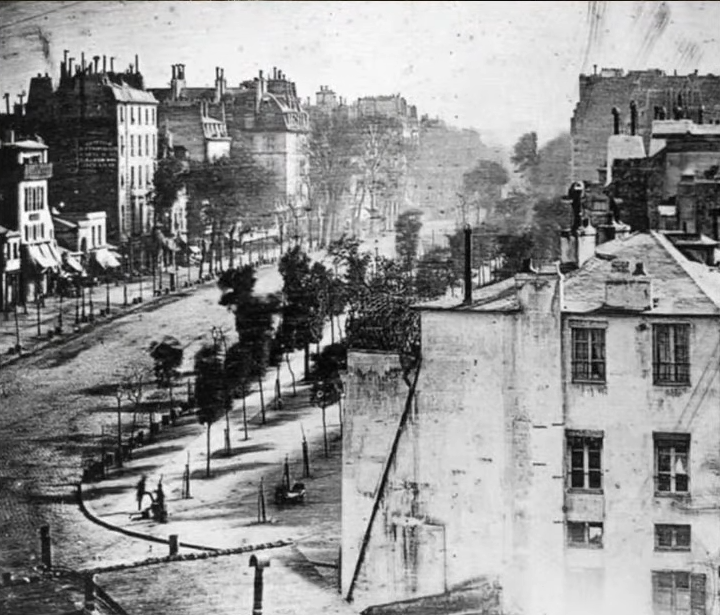
Early photographs of the story
The first negative in history was taken by William Henry Fox Talbot in August 1835. It is a photograph of the window in the south gallery of his home (Lacock Abbey) in which it is possible, with the aid of a lens (as Talbot himself suggests), to count the 200 or so glass tiles that make up the stained glass window. Instead, Roger Fenton (1829-1869) is considered the first war correspondent in history. He chronicled the Crimean War (1853-1856) to provide photographic documentation to support the (written) reports of war correspondent (again, the first in history) William Howard Russell (1820-1907).


Color Photography and Modern Photography (20th Century)
Autochrome: The Lumière brothers introduced the autochrome process in 1907, enabling color photography using microscopic grains of colored starch.
Kodachrome: Introduced by Kodak in the 1930s, Kodachrome film became one of the earliest successful color reversal films.
Digital Photography: The late 20th century brought the digital revolution to photography. The first digital camera was created in the 1970s, and by the 2000s, digital cameras became mainstream, leading to the decline of film-based photography.
Digital Age (Late 20th Century - Present)
The advancement of digital technology has led to the emergence of digital single-lens reflex (DSLR) cameras, and later mirrorless cameras, which offer more control. This has revolutionized photography and made it accessible to everyone, but it has also dramatically trivialized its content and made a certain kind of invasion of privacy. But it is in the post-processing that digital photography has opened up new possibilities for image manipulation and editing. Software such as Adobe Photoshop have become indispensable tools, first for photographers and then for all users, with almost unlimited possibilities for manipulating and editing photographed subjects and circumstances. The Internet and social media platforms have enabled millions of users to share photos globally, giving rise to new forms of visual communication and uncontrolled dissemination of photographed material, with all the risks and consequences that this entails.
AI-generated images: Privacy and copyright risks
One of the tools that has caused the most amazement around the world in the last few months is the image-generating artificial intelligence that is now available to any Internet user through applications such as DALL-E 2, Stable Diffusion, and Midjourney: The extraordinary potential of photography is bent to the needs of media manipulation and the trivialization of mass production. Today, we have moved from retouching to creating subjects and circumstances that are, in some cases, completely unreal or nonexistent. While it now seems clear that diffusion models can be the springboard for the development of ever more surprising AI, a group of researchers recently published a paper showing that there are some risks to the data used by these new technologies. The issues raised add to the many concerns that generative AI raises, and draw attention to an aspect that is still little addressed in the debates surrounding the field: The privacy of input data and the dangers of storing it in models.
These technologies are currently based on so-called diffusion models, a new method of operating AI that is proving more effective, at least in this area, than the previous Generative Adversarial Networks (GAN) approach. Without getting too technical, the difference lies in the process used to generate the content, which in GAN uses two competing neural networks (one that creates a verisimilitude item and one that verifies that it was created by the other, where the former is designed to fool the latter), while in diffusion models the operation is based on removing noise from the given input data in order to create a plausible image that is consistent with the given textual prompt. [Here]
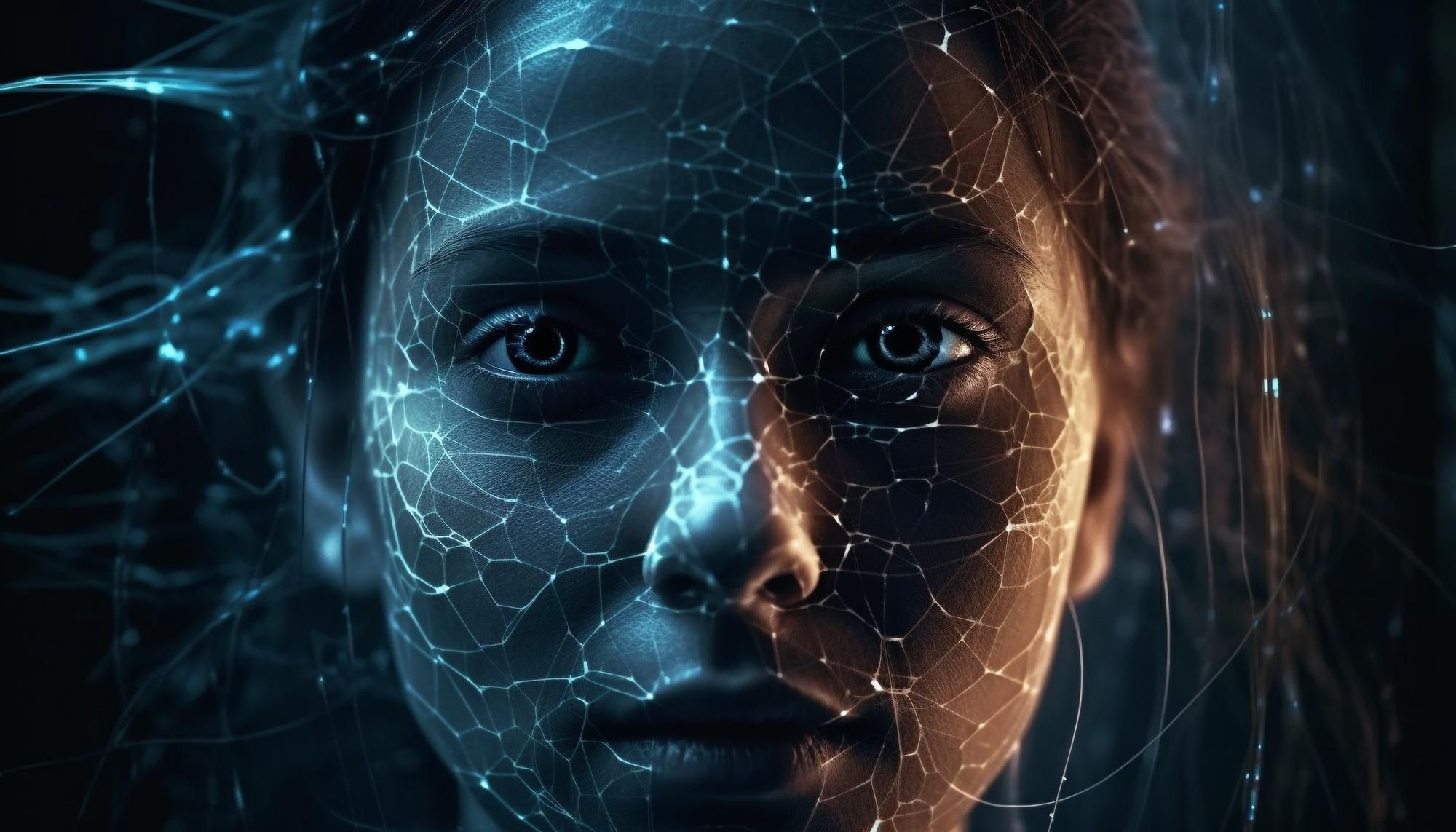
Invasion of the Body Snatchers
Generative AI creates new content (in our case, new images) that is different from the dataset used as input to train the generation algorithm. The paper's group of signatories suggests using "synthetic" information, i.e., taken from faces and people that are not themselves real. Could this reduce privacy risks? Think about putting your picture on a social profile. Someone decides that they like your face and wants to replicate it: if the AI is given your photo as input and then generates a completely identical (or nearly identical) image, will your privacy be protected? Will the patterns that are generated from this data be considered as the original creative form? Currently, diffusion models store and regenerate the data they receive as input during training. Cybersecurity experts have reported attacks aimed at accessing the datasets used to train the most popular models.
In the case of Stable Diffusion, the researchers were able to retrieve numerous photographs of recognizable people (i.e., personal information), which made up 58 percent of the collected images, while 17 percent represented products for sale and 14 percent were logos. In addition to the issue of privacy, it is interesting to note that 35 percent of the images in the dataset had a copyright notice that prevented them from being reproduced, but many of the others were likely also copyrighted. In some cases, however, the images were under a license that required attribution, a link to the license, and notification of any changes. All of these protections apply to the original images used in the training. [Here]
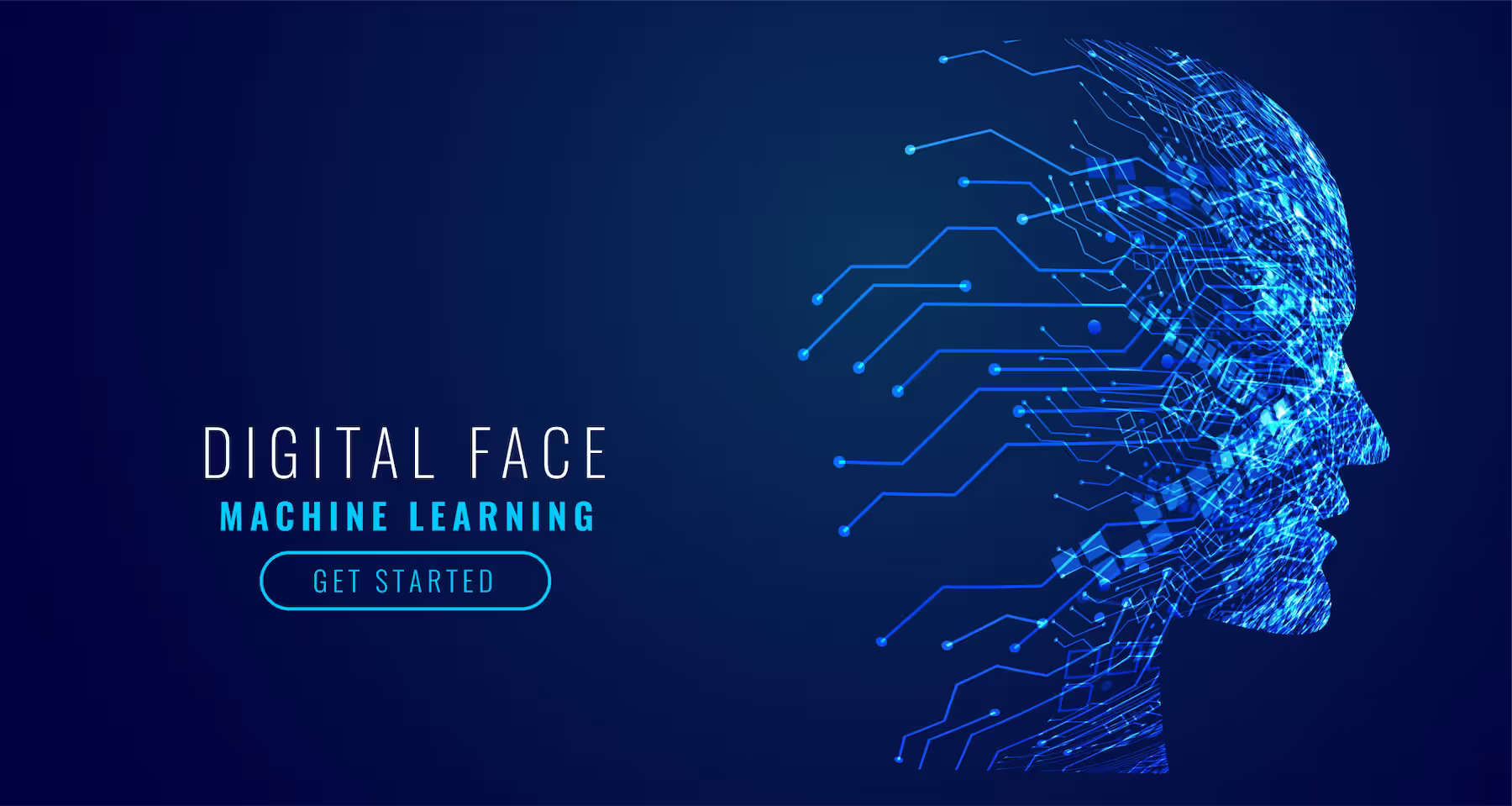
Artists raise their voices against "artificial" revolution
So the problem is twofold: Understanding whether their inclusion in the dataset infringes copyright, but also verifying that the output of the generative AI is sufficiently different from the source images to avoid intellectual property infringement. Last January, three artists filed a lawsuit against Stability AI and Midjourney, which created the artificial art generators Stable Diffusion and Midjourney, and DeviantArt, which recently created its own artificial art generator called DreamUp.
As a lawyer who is also a longtime member of the visual-arts community, it’s an honor to stand up on behalf of fellow artists and continue this vital conversation about how AI will coexist with human culture and creativity. The image-generator companies have made their views clear. Now they can hear from artists. [Because AI needs to be fair & ethical for everyone, by Matthew Butterick]
The challenge now is finding out what the rules are?
